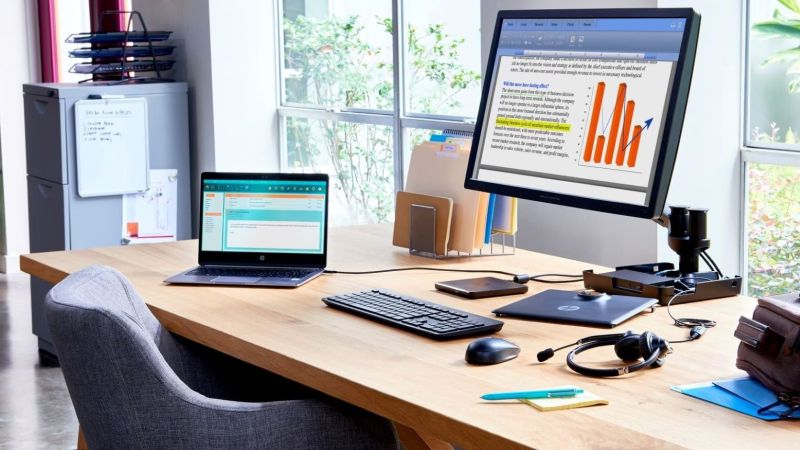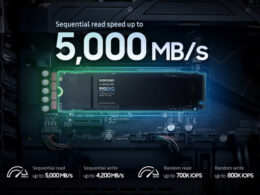HP Sees Slight Revenue Decline, But PC Segment Growth
HP Inc., one of the top three largest PC manufacturers worldwide, reported a slight decrease in total revenue at the close of its second fiscal quarter. But, some good news surfaced in the PC sector, where revenue increased by 3% to reach $8.43 billion — marking the first growth since May 2022 and outperforming analysts’ expectations. Particularly in the corporate sector, PC sales revenue increased by 6%, reaching $6.24 billion.
PC Sales Contribute to Half of HP’s Total Revenue
Last quarter, PC sales in the corporate sector constituted 49% of HP Inc.’s total revenue. This fact explains the significant influence of PC sales dynamics on the company’s overall performance. In contrast, in the consumer sector, which made up 17% of the company’s revenue, PC sales fell by 3% to a total of $2.18 billion. According to IDC, PC deliveries globally increased by 1.5% in the first calendar quarter, marking the first increase since the end of 2021—the industry continues to grapple with the impacts of the pandemic, which saw many consumers buying personal computers for remote work.
Enrique Lores, CEO of HP Inc., told Bloomberg, that about 10% of deliveries in the second half are expected to be computers with a local acceleration function for artificial intelligence systems. This proportion could rise to 50% within two years, making this product category a significant revenue driver.
Total Revenue, Slight Drop but Above Expectations
HP Inc.’s total revenue in the past quarter dropped nearly 1% to $12.8 billion — though this was above analysts’ expectations of $12.6 billion. A breakdown shows 66% of the company’s revenue comes from personal systems, and 34% from printing devices. Corporate personal systems formed 49% of all revenue, while for the consumer segment, it was just 17%. The most significant influence on HP’s total revenue came from printing consumables (22%). Corporate printing devices contributed to 10% of the company’s revenue last quarter, with the consumer segment only 2%.
A solid operating profit of $1.3 billion, 62% of which were driven by printing systems and consumables. The profit rate for this direction reached 19%. Personal systems contributed only 38% to the operating profit, with a profit margin in this sector not exceeding 6%.
Performance of Personal Systems
Revenue from personal systems ($8.4 billion), which includes desktop PCs and laptops, was mainly driven by the corporate sector (74%), leaving no more than 26% for the consumer segment. This revenue increased by 3% year-on-year, and 2% quarterly. The operating profit in the personal systems segment reached $508 million, taking 6% of the revenue. Overall, HP-branded personal systems saw a 7% year-on-year increase in shipment, with a 1% decrease in the consumer segment, and a 12% increase in the commercial sector. As previously mentioned, revenue from personal systems in the corporate sector increased by 6% year-on-year, while in the consumer sector it decreased by 3%. According to the company, educational institutions demonstrated demand for new PCs during the reporting period.
Printing Devices Revenue
The printing devices segment contributed $4.4 billion in revenue for HP Inc., a decrease of 7% sequentially and 8% year-on-year. The operational profit in the printing sector reached $829 million, a profit rate of 19%. Two-thirds of the company’s revenue in this sector was generated by consumables sales, with device sales in the commercial segment making up another 27%, leaving only 7% for the consumer segment. However, revenue from consumable sales decreased by 5% year-on-year and 4% quarterly. In terms of quantity, printing device sales decreased by 17% year-on-year. The revenue in the printing devices segment decreased by 16% year-on-year in the consumer sector and declined by 12% in the corporate sector. Per Lores, the consumable subscription service launched in the corporate sector this year has been successful, opening the possibility for implementation in the consumer sector.





